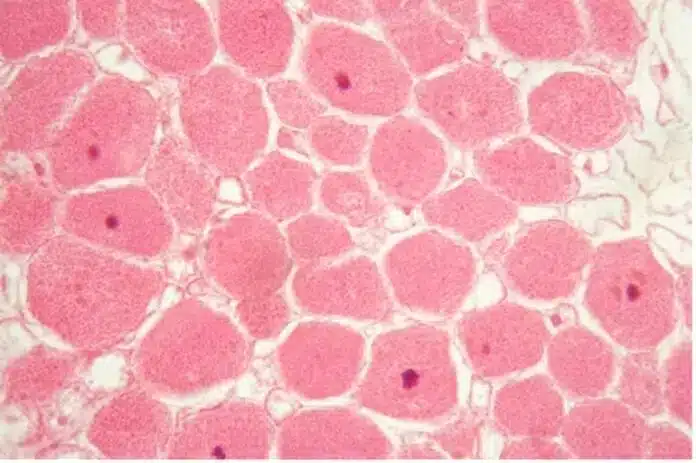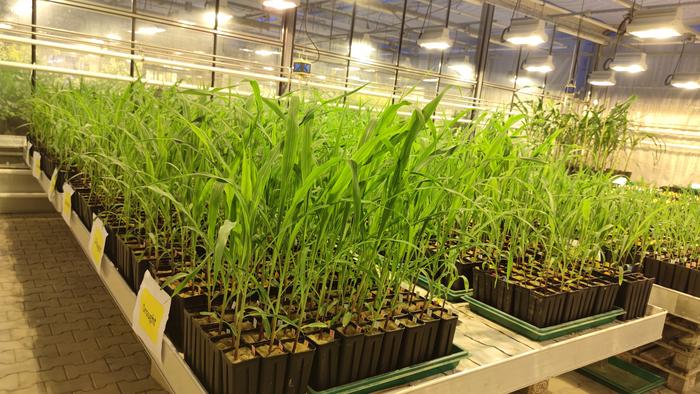Soil health has become increasingly important, but how does the root microbiome fit into the equation to feed the seed?
When viewed from a cosmic perspective, life on planet Earth depends on a razor-thin continental crust that makes up less than 0.4% of the Earth’s total volume. Within this extremely thin “skin” is an even thinner layer known as the root microbiome, or rhizosphere, where plant roots meet soil, minerals, water and soil microbes. Without this interactive zone, life could not exist.
This is one of the richest and most diverse microbial reservoirs on Earth. In the rhizosphere, there is estimated to contain thousands of unique bacterial species, not to mention other microorganisms such as archaea, fungi and protists. Compare this to the less than 1,000 different bacterial species in the gut of any given human. Perhaps not surprisingly, the establishment of interactions with the soil biota represented a milestone for plants’ adaptation to the terrestrial environment. Simply stated, soils support plant health via the microbiome.
Why Is a Microbiome Important?
For years, scientists have observed that despite the universal presence of soil pathogens and conditions favorable to infection, plants in some regions are less susceptible to disease than plants in other areas. What constitutes a healthy microbiome is hard to define. In a healthy plant, there are many beneficial organisms like rhizobia and Trichoderma, but there are also many pathogens that are there but not causing disease.
“This topic is so large because the more we know, the more we realize we don’t know,” says Molly Cadle-Davidson, chief science officer at Advanced Biological Marketing, Inc. “When we realize there are pathogens present that are capable of causing disease but are not actively causing disease, we wonder why not? Then we think about the roles of the other organisms in the microbiome that we have not previously thought of as having a real synergy or interaction with plants. That is something actively under research.
“Neither we nor plants can thrive without germs. We would lack vigor, resilience, and good health without our microbes. There are many good germs all around us. This idea that all germs are bad is not true. This is something we need to teach. Using hand sanitizer is places we know have a lot of harmful germs is a good practice, but you don’t need to use it every day. The microbes we acquire getting ‘dirty’ as kids and as we move through life enable us to more quickly adapt to our environment. The same is true for plants: microbes acquired by seed, soil, air and water transmission all contribute to the performance potential of a plant. The plant and its genome can only do so much, and the genomes associated with a plant or human microbiome should be considered as adding to the genetic potential of the host organism. Interestingly, we have learned that several traits thought to be strictly plant-controlled traits are in part or entirely attributable to the plant’s microbiome.”
Just as digestive tract microbes interact with the food consumed by animals, the root microbiome mediates the soil-based diet of plants. The microbial social network is not only beneficial to plants, it is also essential to the entire community of soil organisms. Microbes often cannot function without the support of their social network since they’re constantly interacting with their neighbors by trading food, removing toxic waste and sending signals about changes in the soil around them.
“Historically, we have classified microbes as beneficial or as pathogens with respect to how they interact with the plant,” Cadle-Davidson observes. “But now we have learned that is not always true. The combination of microbes is not always additive. If you know that one strain of an organism increases root growth and another strain increases plant growth and biomass, you do not necessarily get something that has both big roots and big leaves. That is what you hope for, but that is not what always happens. The complexity is the other microbes also present in the microbiome.
“Another factor is how the plant is responding. This is true of a lot of the products out there — the microbes interact with the plant and cause changes in gene expression. The changes will cause some genes to express at a higher level and turn up some biological pathways while others may be turned down. In a plant as with humans, all biological pathways interact with each other. If you turn up one pathway, you are also affecting the other one without having intentionally affected it. The idea of trying to get an additive effect is really challenging because it could turn out that the strain that is increasing root growth is turning up pathway ‘A’ while the strain that is increasing leaf size is turning up pathway ‘B’ but is also changing pathway ‘A’. These are not necessarily independent events and the results are not necessarily additive. You have to do a lot of work selecting your strains and your strain combinations to understand the host plant to get a product that performs in the field.”

The catch is that without knowing what each microbe in the soil does, it is nearly impossible to decide which microbes to add or subtract to maximize crop yields. Adding or removing the wrong types of microbes could upset the delicate balance of the community, with disastrous results for plant growth and crop yields. As a result, scientists must understand not just the microbes that directly affect plant growth and soil health, but also all of the surrounding microbes that play an indirect role in supporting the entire microbial community.
It is the interconnectedness of soil microbes that makes them nearly impossible to study in isolation in the laboratory, which is how microbiologists have typically figured out how different microbes work. Isolated from the other soil microbes they normally interact with, microbes brought into a sterile test tube may simply die. Davide Bulgarelli, a principal investigator at the University of Dundee in the United Kingdom, describes this microbial interconnectedness with a 1934 quote from Lourens Gerhard Marinus Baas Becking, a Dutch botanist and microbiologist: “Everything is everywhere, but the environment selects.”
Bulgarelli suggests characterizing the plant microbiome and its function can be applied in an agricultural setting, equipping the crops to grow better in resource-poor environments and to fight off dangerous pathogens. One strategy many companies are pursuing is a form of plant probiotic, which consists of preparations of beneficial microbes to be mixed with seeds at planting. Another approach is to use plant breeding to select for varieties that have enhanced symbiosis with the microbiota. Many questions remain about the plant microbiome, not least of which is how thousands of years of cultivation have changed crops’ relationships with the soil biota. Using a cultivation-independent approach, scientists have determined that wild ancestors and modern varieties of barley (Hordeum vulgare) host distinct microbiotas.
Jos Raaijmakers of the Netherlands Institute of Ecology and his colleagues recently identified a shift in the structure of the microbiome of modern and ancestral varieties of common bean (Phaseolus vulgaris); Bacteroidetes were more abundant in wild relatives, and their contribution to the community was progressively replaced by Actinobacteria and Alphaproteobacteria in the more domesticated plants.
How do these differences alter the functionality of the microbiome? Thanks to the experience gained by Arabidopsis researchers, scientists are now in a position to address this question.
“The idea that plants shape the cocktail of bacteria, archaea, and other microbes attracted to their roots is decades old. The concept of soil fatigue, for example, comes from observations of plants attracting soil pathogens that become more abundant over successive growing seasons of the same crop,” explains Venkatesan Sundaresan, University of California, Davis, plant biologist. “Eventually, agricultural productivity falls. The soil changes don’t necessarily benefit the crop, even though the crop is manipulating the soil. Contrary to expectations, we found that plants grown in sterile clay and inoculated with microbes from another kind of soil, grew faster with microbes from wild soils, and slower with microbes from cultivated soils. But when we grew seedlings in clay inoculated with microbes from a monoculture field that had been left fallow for several years, the seedlings grew faster than in any other soil treatment. That implies monocultures could have beneficial microbes as well as growth-limiting ones.”
Is There a Role for Biostimulants?
The interactions between soil microbes and plants are still very much uncharted territory, which makes it an exciting area of study. This is especially the case for the interactions between soil microbes and crops in agricultural systems.
“We know that there are bacteria and fungi that can influence plant growth or soil nutrient availability, but most of those studies have been done with only a few plant species or under very specific growing conditions. Much of my research is looking at what interactions are occurring between specific crops in field conditions, and how those interactions might differ, based on specific conditions or crops in a farmer’s field,” says Sarah Strauss, assistant professor and a soil microbial ecologist at the University of Florida.
“Theoretically, biostimulants for other crops could play a similar role to what we see in grain or cereal crops. Many of the bacteria and fungi that have growth-promoting properties for corn, or Arabidopsis or tomatoes could theoretically also impact trees and other vegetables. If that’s the case, it would make our research a little easier! However, this is why additional research is necessary. For example, we know that the plant genotype can play a role in the rhizosphere microbiome composition both between crops, but also within species. How do those differences influence the efficacy of a biostimulant?”
The soil environment and management of that soil environment, i.e., fertilizer application, irrigation, tilling, etc., is also a key component in the soil microbiome. The sandy, low organic matter soils in Florida are very different from those in the Midwest, for example. This means that the native soil microbiome is likely different, and the microbial amendments that contain organisms that were not isolated in Florida might not colonize or interact in the same manner as they might in a different soil environment, Strauss says.
From the customer’s point of view, everyone is looking for someone to tell them what microbes are on their farm and in their soil and, therefore, what microbes should be applied to their seed. The ultimate solution will be when a farmer can send soil samples to a lab for fertility analysis and simultaneously have a biological analysis to determine which biologicals need to be applied to correct microbial deficiency.
“I believe it is only a matter of time until this kind of microbiome analysis is widely available. This will be the next level of prescription farming,” Cadle-Davidson says. “It will be just like genome-based goals for human medicine. While it has not yet come into practice, in theory, if a doctor has an analysis of your personal genome, they could make a very precise recommendation about what medication would work best to address your medical needs. It could be the same thing with crops: using an analysis of the plant’s genome and on-farm soil microbiome to know which products will react best with that specific environment to achieve the highest crop performance. Once we know how to interpret the microbiome, the more information about it we have, the better our result will be. There is a complexity of the plant-microbiome interaction that we are only beginning to understand.”













